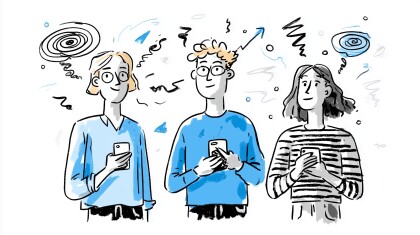I haven’t verified this with the rest of the team, but I’m pretty sure Slack is the first app most of us fire up each day. Either that or Spotify. Probably both.

My point being, Slack is at the heart of how we communicate with each other at Media Suite – be it for work or for play. Our team has been growing and how we use Slack has been evolving as well. So, I thought this would be a good time to share our Slack setup, and at the same time, give you an insight into how we go about our daily lives.
For those not familiar with Slack, it is a team chat application that aims to centralise internal communication and collaboration into one place. The idea was that it would replace internal emails and threads, and improve transparency.
With half of our development team working remotely (and across time zones) having that visibility means we can stay connected with each other, collaborate and build that culture of trust.
Everybody, Now

By default, Slack creates a #general channel which all users get added to (and can not leave). As its name suggests, this is where the all the chatter and water-cooler conversations happen.
#random is where all the fun happens. By that I mean, photos/videos of our cats and dogs, all the memes and gifs, as well articles that aren’t work related. Also dad jokes. Lots of them.
For company-wide notices, we have the #announcement channel that has a (kind of) strict reply-only-in-threads policy. This is to prevent important messages from getting lost in the noise. Recent announcements include an impending visit from a former colleague (Richie!) in December, and… cake in the kitchen.

(We do love our cakes here at Media Suite so… that announcement does come up pretty often.)
The #learning-lunch channel is where we organise and discuss topics to be presented by one (or a few) of our team each Thursday. #lunch-order is where the daily lunch train gets started on other days.
To keep track of who’s in and out of the office, we have the #whereabouts channel. This helps manage expectations of when you can expect a response from folks who are out of office, or working from home.
Beyond that, being the geeks we are, of course we have channels such as #music-for-programming, #getschwifty (for the Rick & Morty fans) and #got-spoilers to yarn about the things people love.
Spending some time in the channels above would likely give you a very good picture of the awesome people at Media Suite. But of course, we’re not just about having fun.

Work, Work
Every function/team e.g. #accounts, #front-end, #devchat (for developers) have their own channel, so discussions and decisions can be recorded. Of course, conversations happen offline too, but we’re usually conscious of the need to keep our remote team up to speed as well.
Project teams also have separate channels, where work is coordinated, meetings are confirmed and async stand-ups take place when it’s a cross timezone project team. Integrations with other tools we use are installed to help increase visibility and keep everyone on the same page.
Some examples would be the Github plugin, that posts a notification to the channel whenever a new pull request is opened and needs review. We also have one for Jira, which informs the team of ticket status changes.
We’ve also started managing incidents in Slack channels recently. When an incident is reported (e.g. an outage of a site), one of the first tasks is to create a new channel for that incident, so that we can keep our communication and information in one place. Stakeholders can be invited if/when appropriate, but the information in the channel can be condensed into a report that is then shared with the wider team and stakeholders anyway.

All In All…
Having Slack as our primary communication hub is not without its downsides. We currently have 82 channels in total, and I’m part of 30 of them. Staying on top of all the conversations is impossible, let alone the numerous distractions it creates.
We get around this to a certain extent by letting people join only channels they are interested in, bar the project and company-wide ones. Knowing when to mute channels or turn off notifications helps as well. Overall though, the benefits gained by having a centralised and open method of communication to build trust, relationships and share knowledge far outweigh any cons.
Like every other tool we use, it’s only as good as how we choose to use it, and I think we’ve managed to wrangle the beast that is Slack pretty well so far. Now, where’s that cake…?

Banner image: Photo by Stephen Phillips - Hostreviews.co.uk on Unsplash














